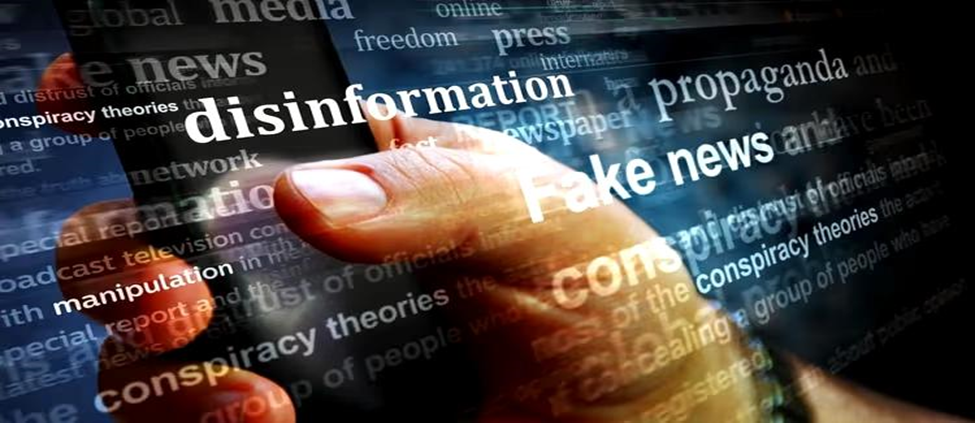Disinformation, the deliberate spread of false information designed to manipulate societies, has become one of the defining weapons of modern warfare. Unlike traditional combat that relies on firepower and territorial occupation, this form of warfare targets the mind, emotions, and collective memory of a population. It spreads silently, often undetected, through social media feeds, manipulated videos, and carefully constructed narratives that blur the line between truth and lies. The rise of digital technologies has only amplified its reach, making disinformation as impactful as tanks or missiles in determining the outcome of conflicts. Imagine waking up to headlines and viral videos showing your army’s generals allegedly admitting defeat in a war that is still ongoing. The footage is widely shared, picked up by foreign media outlets, and soon becomes the dominant narrative online. Even though the military quickly denies the story and proves the videos were forged, doubts remain. Soldiers begin questioning their leadership, civilians lose confidence in their nation’s ability to resist, and international allies hesitate to extend support. The psychological damage is already done. This is not a fictional scenario; it echoes the disinformation operations used during the 2020 Nagorno-Karabakh conflict between Armenia and Azerbaijan, where fake battlefield footage and fabricated surrender messages were spread to demoralize populations and weaken resolve.

The use of disinformation in war is not new. Ancient rulers understood the power of deception long before the internet. During the Peloponnesian War in the 5th century BCE, false rumors were deliberately spread in Athens to destabilize the enemy’s morale. Centuries later, in World War I, the infamous "corpse factory" propaganda story claimed that Germany was boiling the bodies of its own soldiers to produce industrial products. Although entirely fabricated, the story influenced public opinion in Allied countries, fueling hatred and prolonging the war effort. In World War II, both the Allies and Axis powers launched large-scale propaganda campaigns, with leaflets, posters, and radio broadcasts shaping how civilians and soldiers alike perceived the war. These historical examples remind us that disinformation has always been part of conflict, but digital technology has taken it to a new, more dangerous level. In the post-9/11 era, disinformation was used not only to justify wars but also to recruit fighters. The U.S.-led invasion of Iraq in 2003 was partly justified by claims that Saddam Hussein possessed weapons of mass destruction a narrative later proven false but widely believed at the time. On the other side, groups like Al-Qaeda and later ISIS mastered the use of propaganda videos, social media posts, and fabricated religious narratives to attract recruits from across the world. ISIS in particular created highly produced video content portraying their fighters as heroes of an Islamic utopia. Thousands of foreign fighters joined their cause, showing how disinformation can transform the battlefield into a psychological and ideological struggle rather than one of weapons alone. The digital age has multiplied these effects. During the Syrian civil war, selective images and manipulated videos circulated widely online, creating conflicting realities about who was responsible for chemical attacks or civilian bombings. Similarly, in the ongoing Israel-Palestine conflict, viral posts with misleading captions or out-of-context footage shape global public opinion, often fueling outrage without providing the full truth. These examples demonstrate how disinformation campaigns extend beyond national borders, turning ordinary citizens across the world into participants in conflicts they may never physically enter.

The consequences of these operations are profound. Once a narrative takes root, it can change the course of diplomacy, erode alliances, and weaken the morale of entire societies. Military victories no longer guarantee success if the information war is lost. Populations that are constantly bombarded with contradictory stories struggle to separate fact from fiction. This “fog of war,” created by disinformation, makes it difficult for leaders to make decisions and for citizens to know whom to trust. Truth becomes a casualty of war, and once it is lost, rebuilding credibility is almost impossible. To confront this challenge, societies must treat disinformation as a global security threat rather than a secondary concern. Fact-checking initiatives and independent journalism are critical, but they often operate too slowly to keep pace with viral falsehoods. Governments and technology companies have a role to play in exposing manipulation networks, yet overregulation risks stifling free speech. Education in digital literacy may be the most effective long-term solution, enabling citizens to recognize manipulation and think critically about the information they consume.
The world has entered an era where wars are no longer fought solely on battlefields but also in the minds of people. The ability to control perception is becoming as decisive as the ability to control territory. From ancient rumors to modern deep fakes, disinformation has proven itself to be one of the most enduring and adaptive weapons in human history. The challenge for the international community is not only to counter individual campaigns but to build resilience against a system that thrives on confusion and division. The future of global security may depend as much on defending truth as it does on defending borders.




